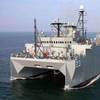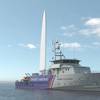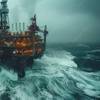Line Optimization: 10% Fuel Savings for Hapag-Lloyd
Design changes made as a result of working with DNV GL has resulted in projected annual fuel savings of more than 10 percent for the new Hapag-Lloyd Cruises passenger expedition ships. The two vessels, HANSEATIC nature and HANSEATIC inspiration, are currently under construction at the Vard Shipyard in Romania and Norway and are expected to launch in April and October 2019.
"The design concept for the two new ships was 'inspired by nature'," says Dr. Henning Brauer, Head of New Builds, Hapag-Lloyd Cruises. "The vessel interiors have been created to reflect the environments our passengers are experiencing inside the ships. But these are also sensitive environments, so reducing the environmental impacts of our vessels is an integral part of the design concept. Working with DNV GL has allowed us to significantly reduce fuel consumption, which also decreases our overall emissions."
"Because these ships will have the highest ice class possible for passenger vessels, PC6, fuel consumption is an essential factor in their economic feasibility," adds Juryk Henrichs, Senior Project Engineer, DNV GL - Maritime. "With roughly 7,000 CPUs doing the heavy lifting, our unique form-parametric hull model was able to identify the optimal design to meet Hapag-Lloyd Cruises' specifications."













